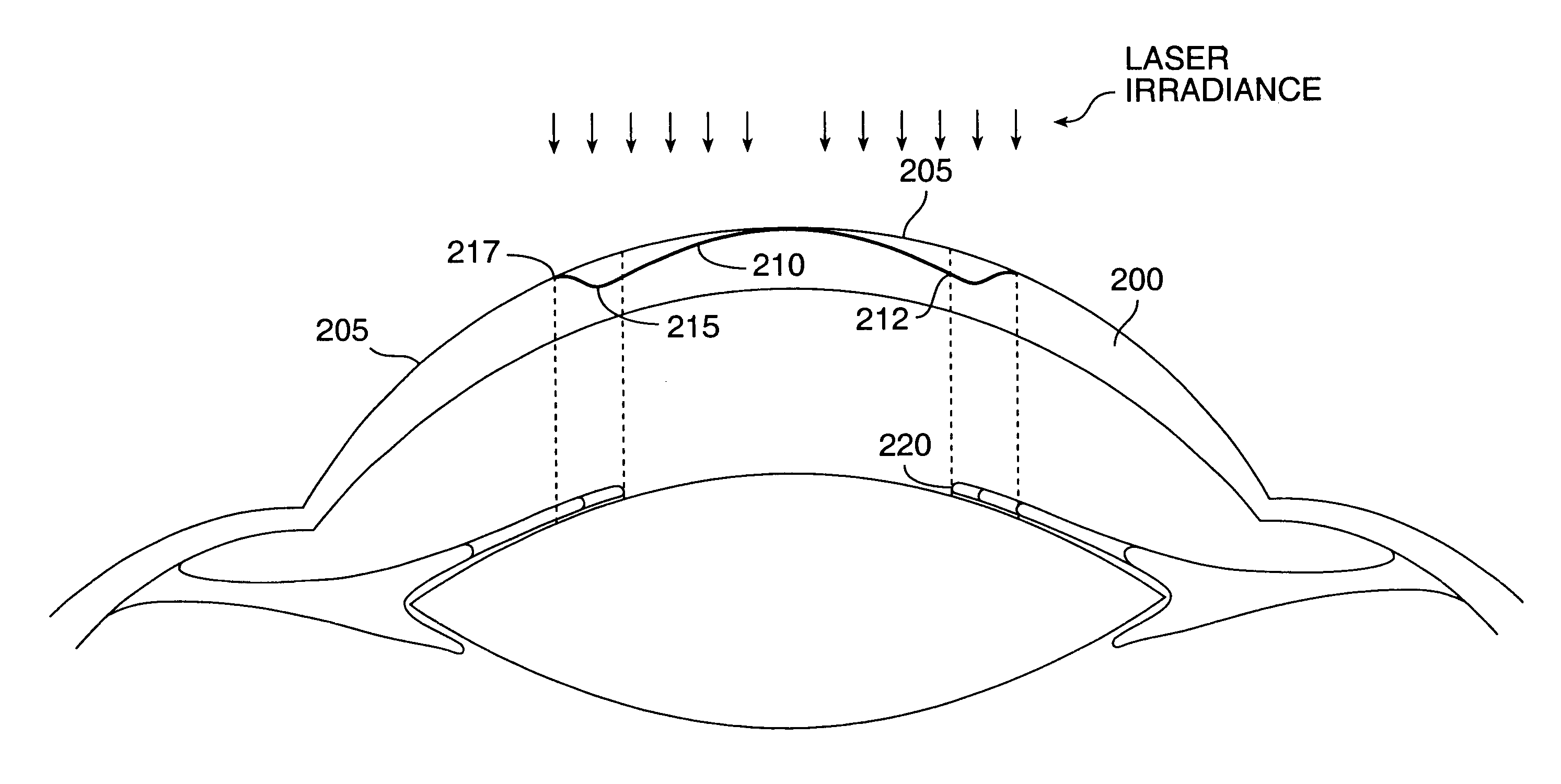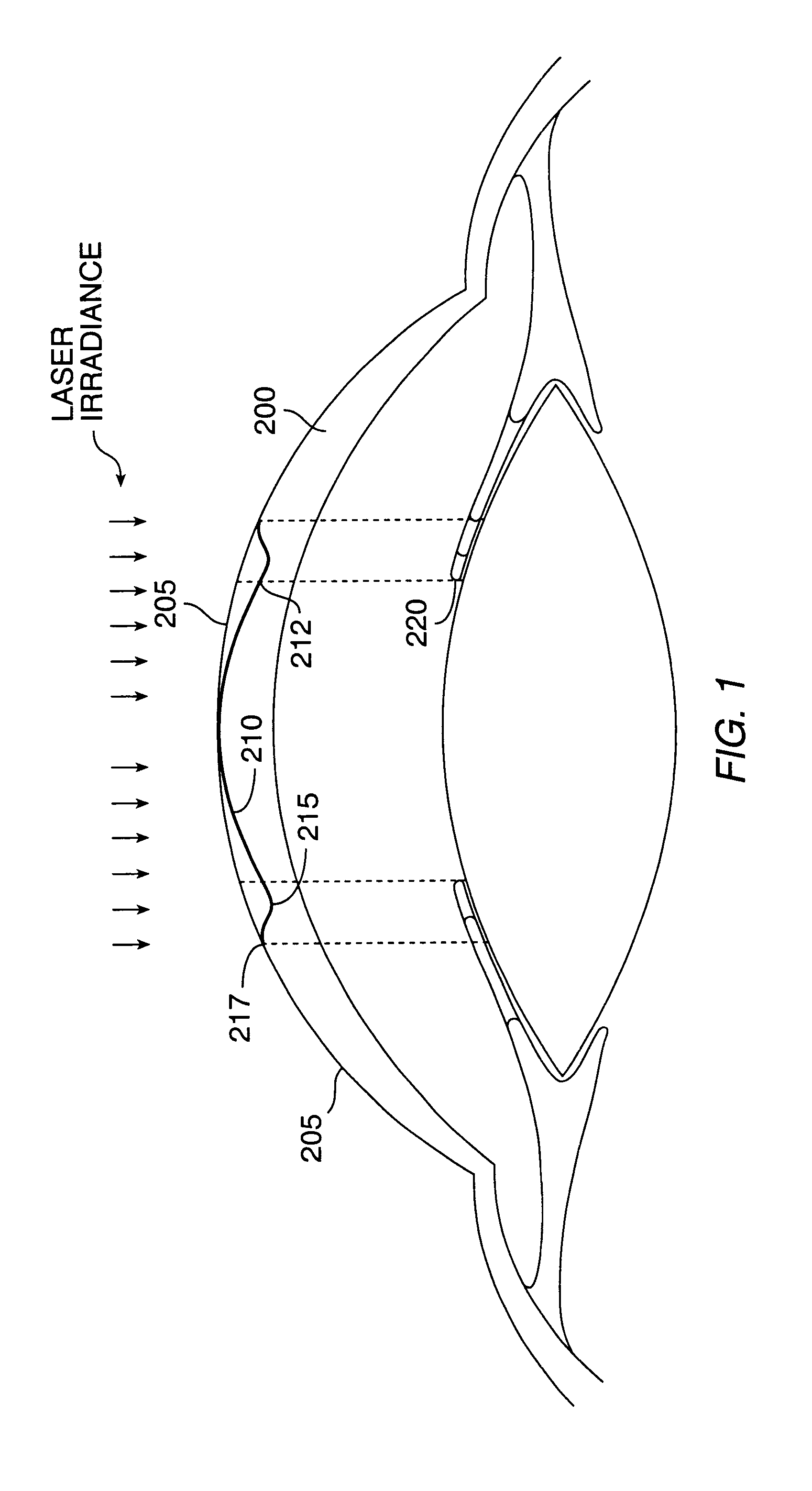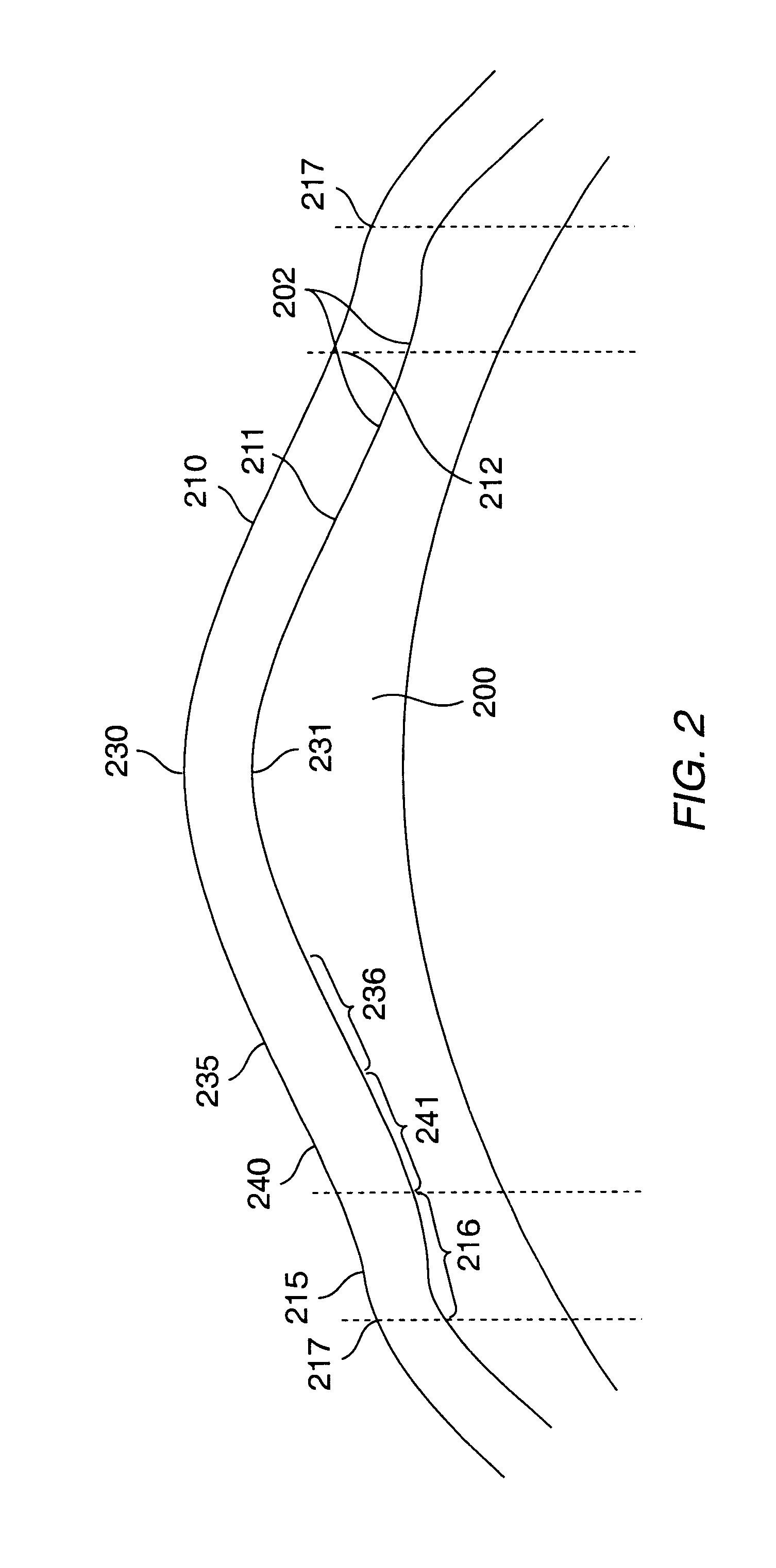Method and systems for laser treatment of presbyopia using offset imaging
a laser treatment and presbyopia technology, applied in laser surgery, medical science, diagnostics, etc., can solve the problems of reducing predictability, and affecting the accuracy of surgical procedures
- Summary
- Abstract
- Description
- Claims
- Application Information
AI Technical Summary
Problems solved by technology
Method used
Image
Examples
Embodiment Construction
Turning now to the drawings, FIG. 1 illustrates a schematic side view of a cornea 200 treated with the invention. The cornea 200 has an anterior surface that provides most of the refractive power of the eye. The initial anterior surface 205 of the cornea 200 has been reshaped to a desired healed profile. The desired healed profile includes anterior optical surface 210 and anterior transition surface 215. The anterior optical surface 210 has a multifocal aspheric shape that corrects for near-vision centrally and far-vision peripherally.
While the present invention will often be described with reference to the mitigation of presbyopia in combination with refractive hyperopia treatment, it should be understood that the benefits of the present invention are not limited to these specific procedures. These presbyopia treatment techniques may be used when no other refractive correction (other than the correction, mitigation, and / or inhibition of presbyopia) is desired, or the present treatm...
PUM
 Login to View More
Login to View More Abstract
Description
Claims
Application Information
 Login to View More
Login to View More - R&D
- Intellectual Property
- Life Sciences
- Materials
- Tech Scout
- Unparalleled Data Quality
- Higher Quality Content
- 60% Fewer Hallucinations
Browse by: Latest US Patents, China's latest patents, Technical Efficacy Thesaurus, Application Domain, Technology Topic, Popular Technical Reports.
© 2025 PatSnap. All rights reserved.Legal|Privacy policy|Modern Slavery Act Transparency Statement|Sitemap|About US| Contact US: help@patsnap.com



